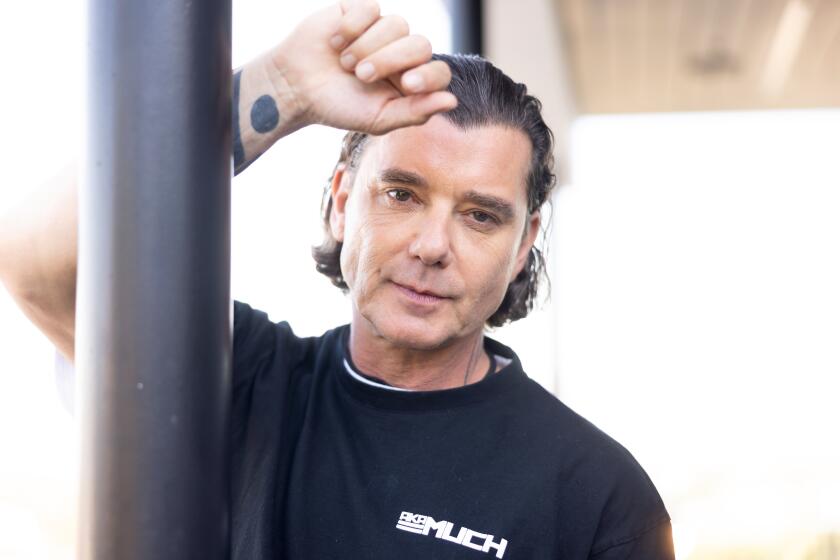A Happy Medium
- Share via
Ceramic artists have long dealt with fighting for aesthetic rights, trying to counteract the stubborn stereotype that working clay belongs more to the level of craft than to art.
Such celebrated artists as Peter Voulkos, Viola Frey and the late Beatrice Wood have helped elevate the ceramic medium’s standing in the art world.
But an issue that will not fade centers on the tension between form and function in a medium traditionally geared toward containers and plates.
A four-person exhibition at the Platt Gallery, “Containers for Ideas: Form and Content in Clay,” addresses both of these concerns in ways that shift according to the artist involved.
The star of the show, in a way, is Karen Koblitz, who directly confronts questions of identity in ceramic art. Her work involves a self-conscious interplay of form and function, as well as art-about-art awareness, unabashedly tapping into art history.
“Matisse Still Life With Nasturtium Vase” blends a Matisse-like color palette and elements of his design sense. “Gina’s Journey: Tree of Life for My Daughter” is an elaborately adorned tree stocked with assorted references, while her “Still Life” series similarly covers a restless spectrum of imagery.
Her vessels, which are ostensibly functional as containers, hark back to classical antiquity. Sometimes she also makes winking references to the modern day, as in the “My Obsession” series, where rubber duckies and florid color patterns appear like ghosts.
Ceramic artists have deep roots to draw from in human and cultural history. Mayan and Shinto shrines exert a direct influence on the work of Patrick Shia Crabb, both in architectural design and surface imagery.
The influence of Native American pictographs has a bearing on the work of David R. Roesler. Plates and totems are created using contrasting color clay patterns under a glaze.
Philip Cornelius makes the not-so-unreasonable comment that “working with clay is like having a conversation with your maker.” He relies on restrained colors, perforated (i.e., nonfunctional) vessels and objects flecked with birds. There’s a serious playfulness at work in “Two Genetically Confused Birds” and “The Tower of Cyclometric Advancement.”
An implicit message in this show is that ceramic art comes in all shapes, hues and attitudes.
BE THERE
“Containers for Ideas: Form and Content in Clay,” through July 2 at Platt Gallery, University of Judaism, 15600 Mulholland Drive. Gallery hours: Sunday-Thursday 10 a.m.-4 p.m., Friday 10 a.m.-2 p.m. (310) 476-9777.
More to Read
The biggest entertainment stories
Get our big stories about Hollywood, film, television, music, arts, culture and more right in your inbox as soon as they publish.
You may occasionally receive promotional content from the Los Angeles Times.










